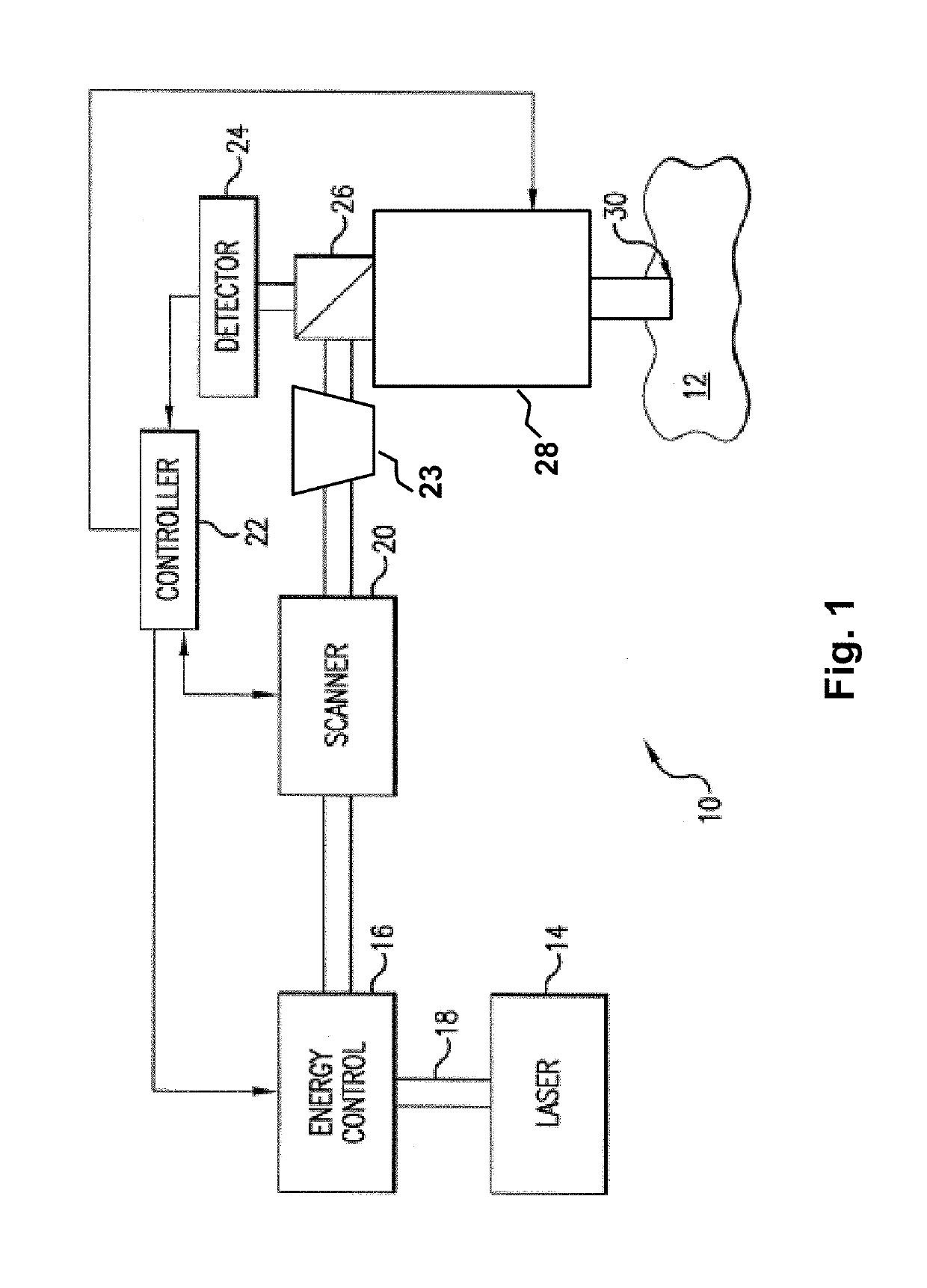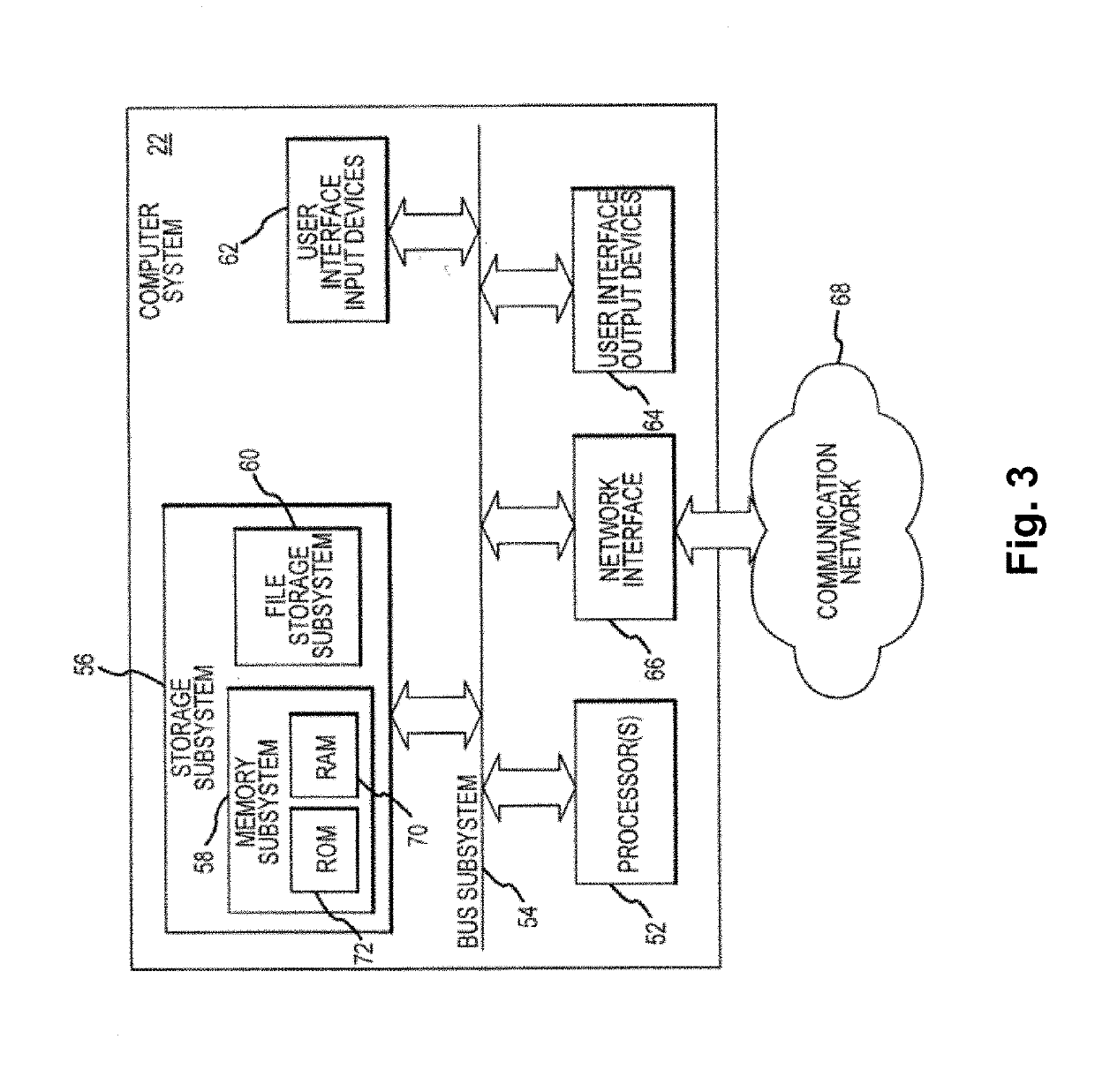Femtosecond laser system and methods for photorefractive keratectomy
a keratectomy and femtosecond laser technology, applied in the field of laser assisted ophthalmic procedures, can solve the problems of less predictability of long procedures, affecting the recovery of patients, and slow visual recovery of prk, so as to reduce the disruption of the epithelial layer, less discomfort, and less postoperative healing time
- Summary
- Abstract
- Description
- Claims
- Application Information
AI Technical Summary
Benefits of technology
Problems solved by technology
Method used
Image
Examples
Embodiment Construction
[0025]Embodiments of this invention are generally directed to systems and methods for laser-assisted ophthalmic procedures, and more particularly, to systems and methods for lenticular laser incisions.
[0026]Referring to the drawings, FIG. 1 shows a system 10 for making an incision in a material 12. The system 10 includes, but is not limited to, a laser 14 capable of generating a pulsed laser beam 18, an energy control module 16 for varying the pulse energy of the pulsed laser beam 18, a Z-scanner 20 for modifying the depth of the pulse laser beam 18, a controller 22, a prism 23 (e.g., a Dove or Pechan prism, or the like), and an XY-scanner 28 for deflecting or directing the pulsed laser beam 18 from the laser 14 on or within the material 12. The controller 22, such as a processor operating suitable control software, is operatively coupled with the Z-scanner 20, the XY-scanner 28, and the energy control unit 16 to direct a scan line 30 of the pulsed laser beam along a scan pattern on...
PUM
 Login to View More
Login to View More Abstract
Description
Claims
Application Information
 Login to View More
Login to View More - R&D
- Intellectual Property
- Life Sciences
- Materials
- Tech Scout
- Unparalleled Data Quality
- Higher Quality Content
- 60% Fewer Hallucinations
Browse by: Latest US Patents, China's latest patents, Technical Efficacy Thesaurus, Application Domain, Technology Topic, Popular Technical Reports.
© 2025 PatSnap. All rights reserved.Legal|Privacy policy|Modern Slavery Act Transparency Statement|Sitemap|About US| Contact US: help@patsnap.com



